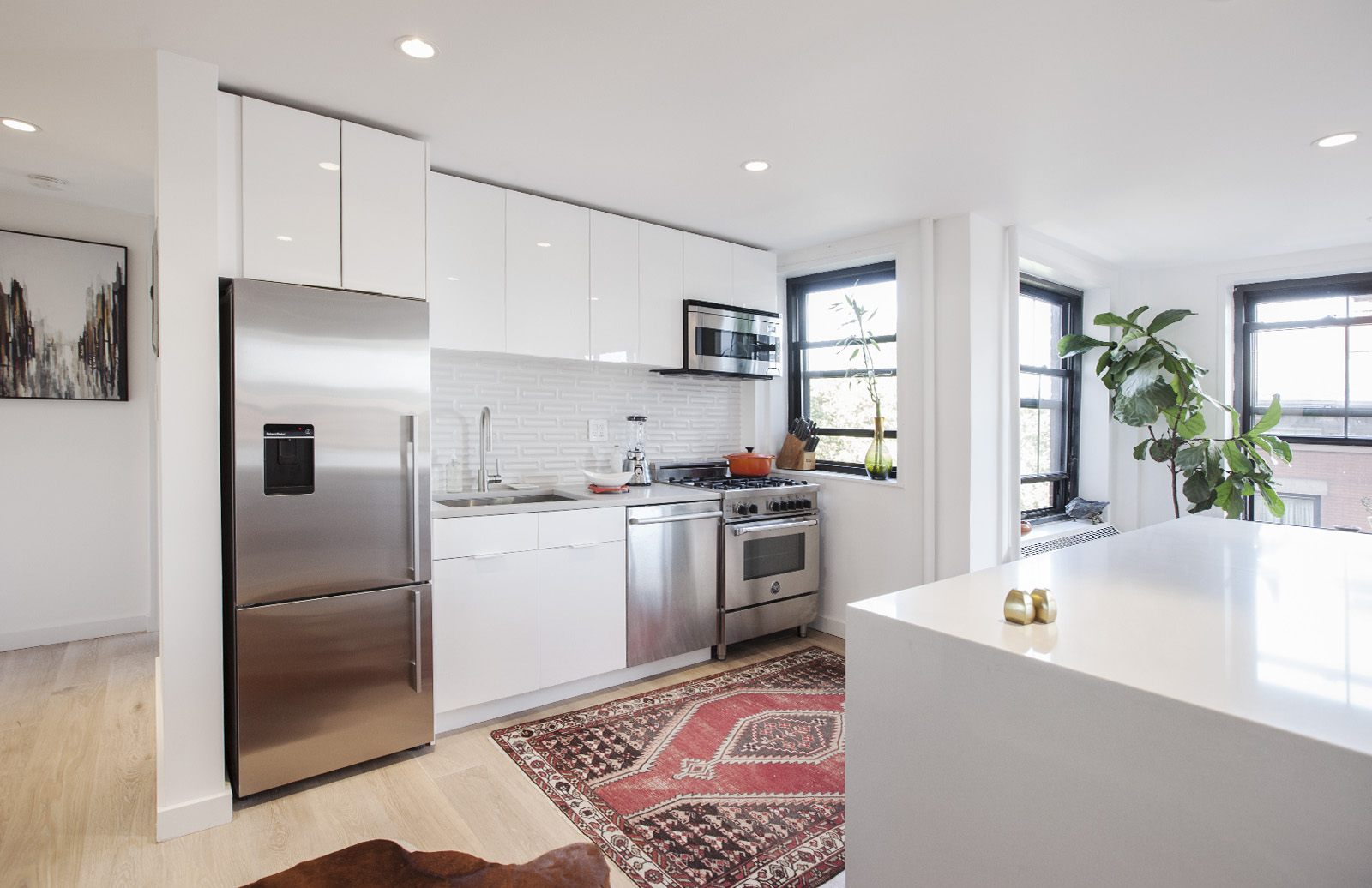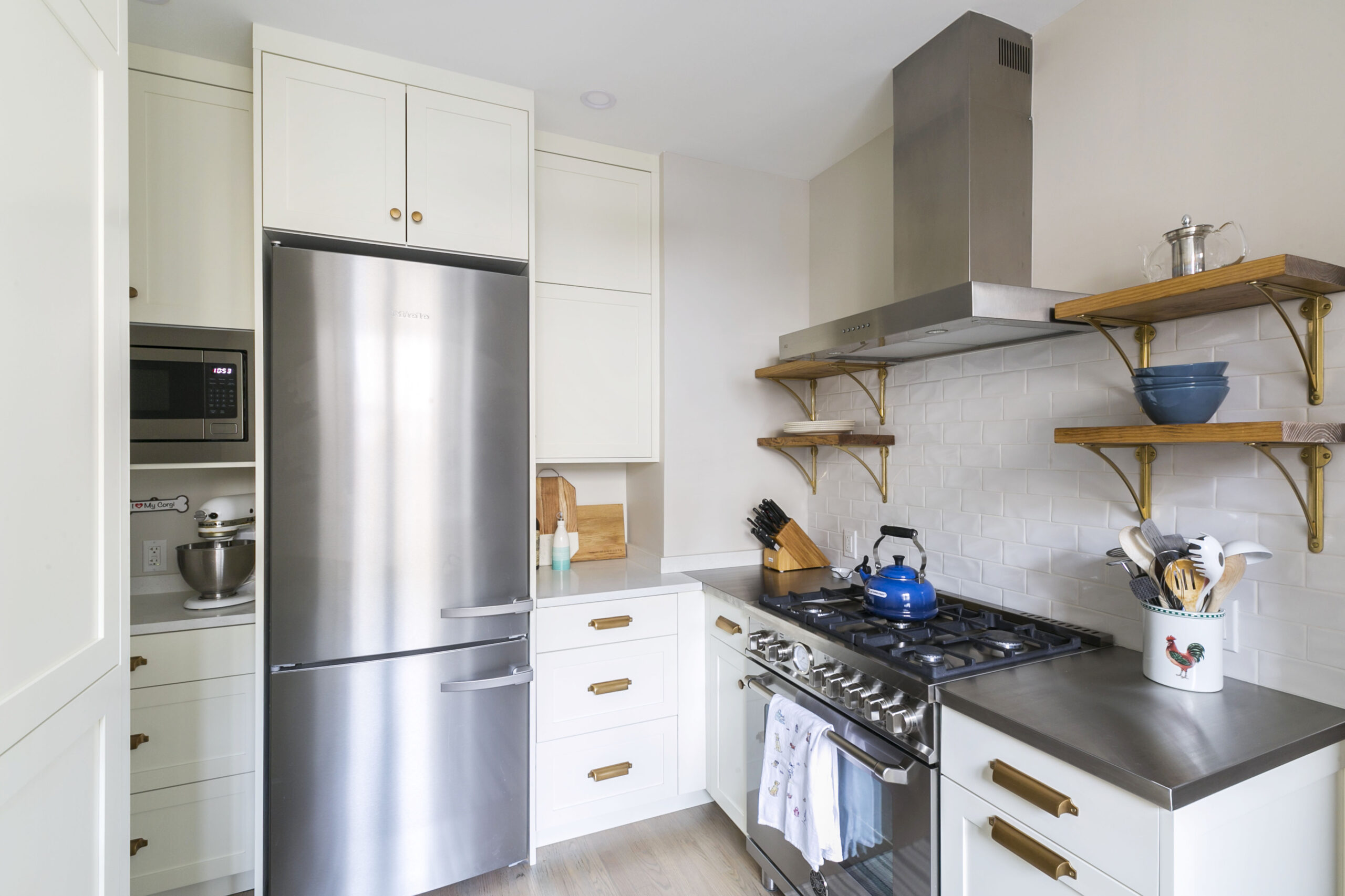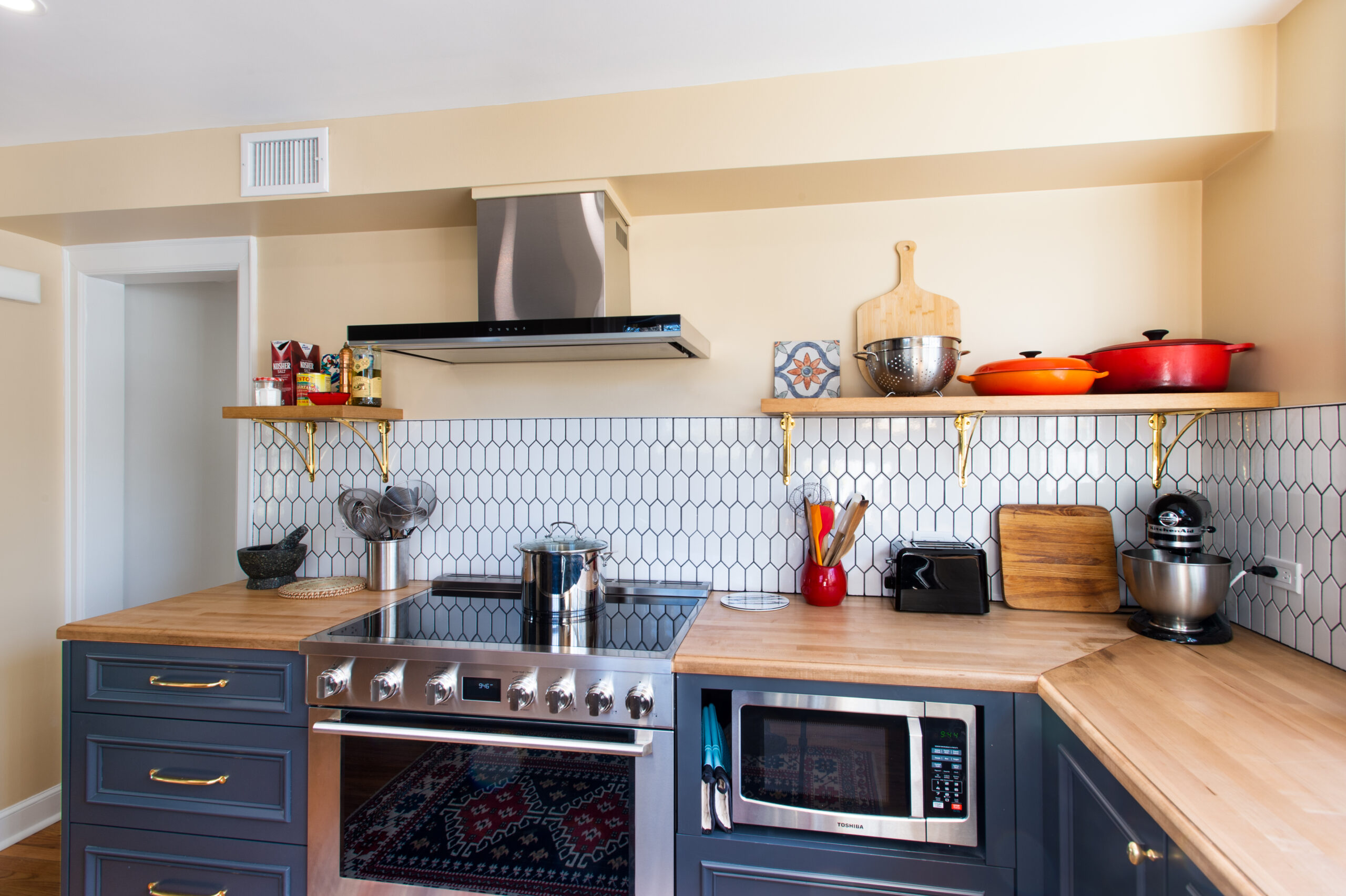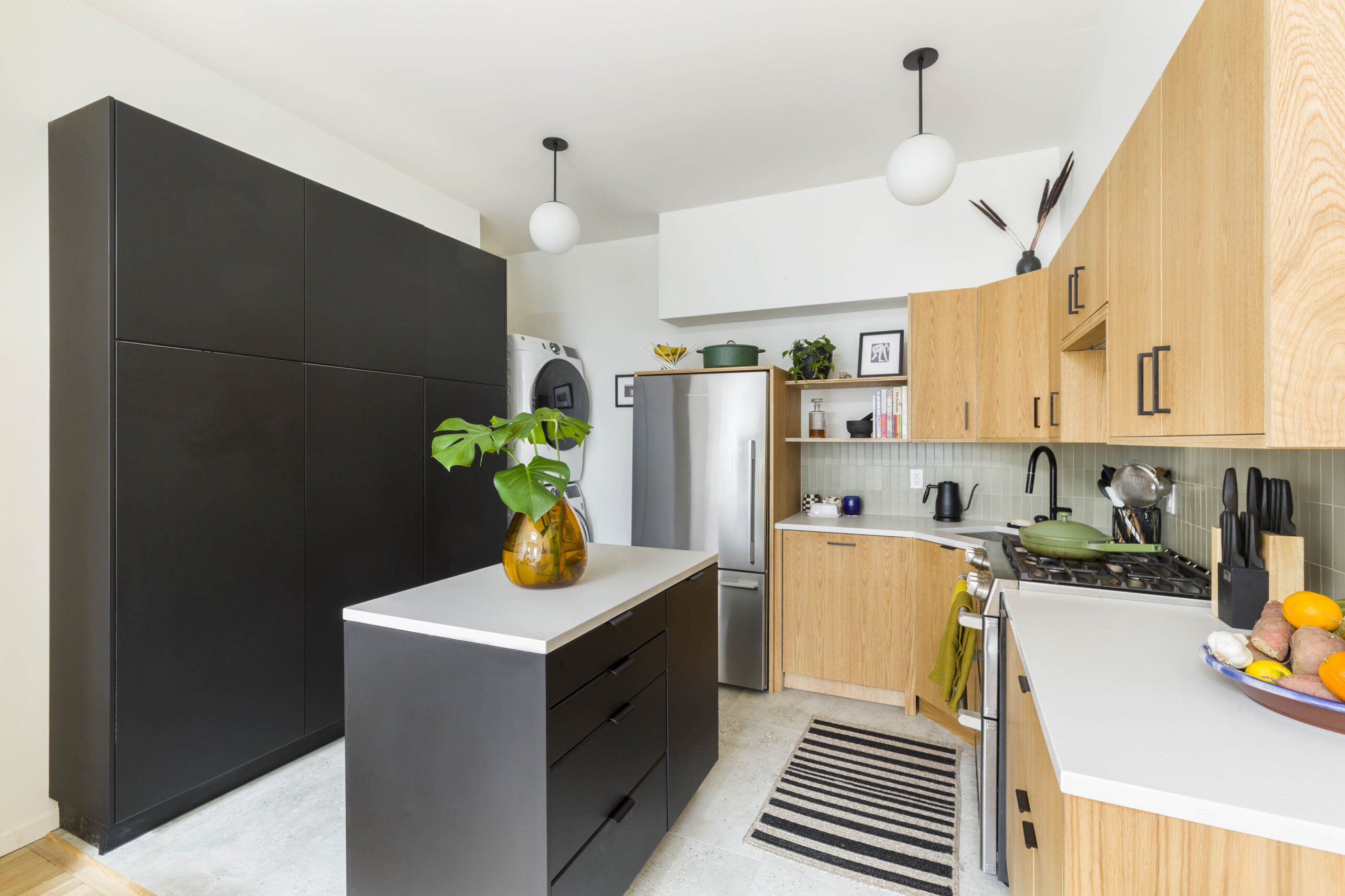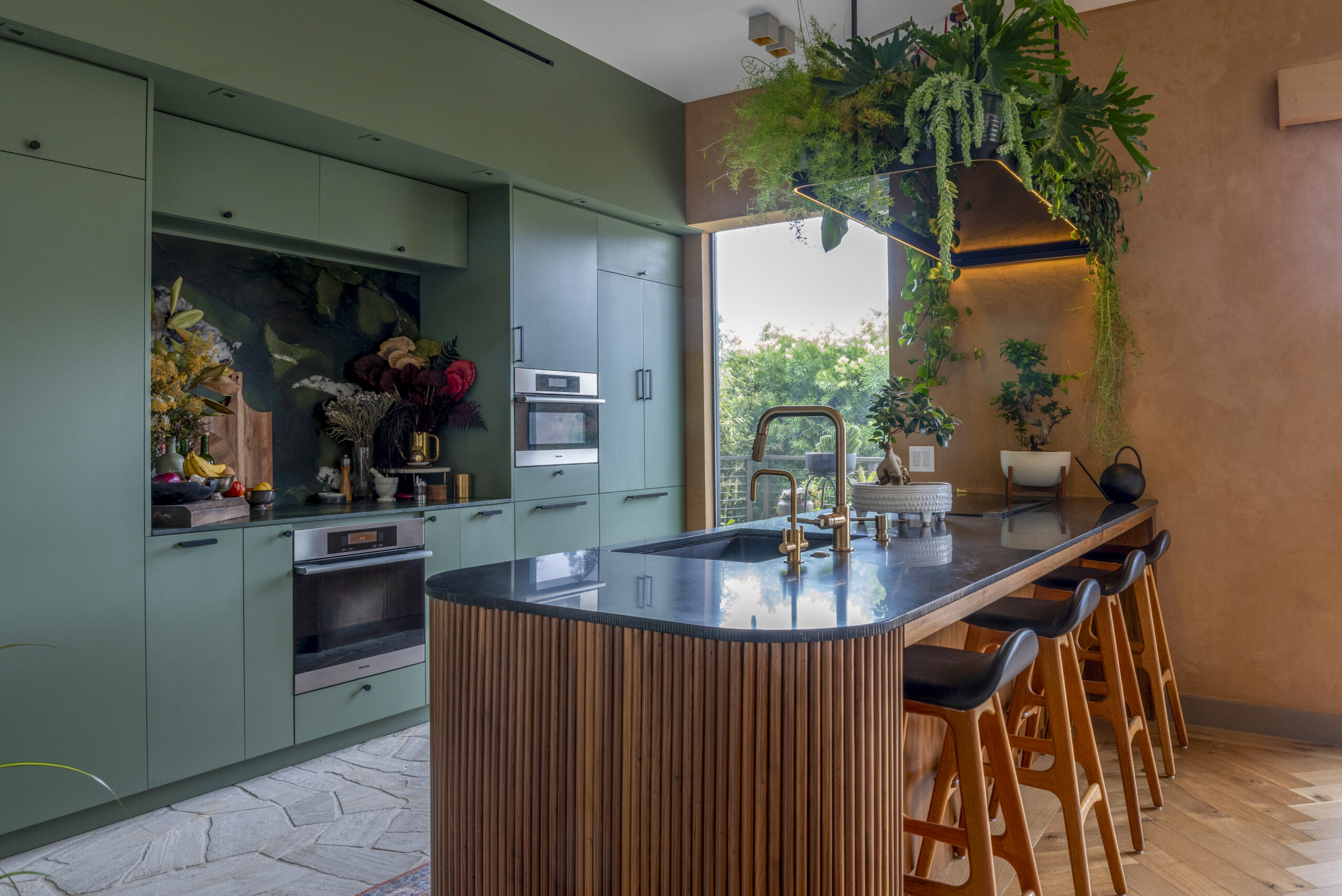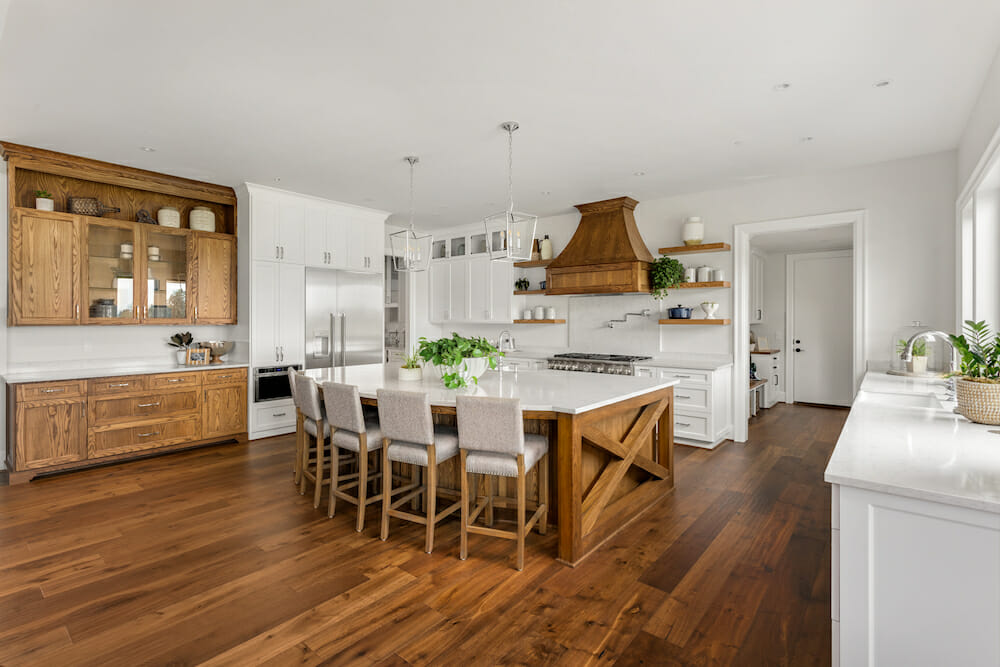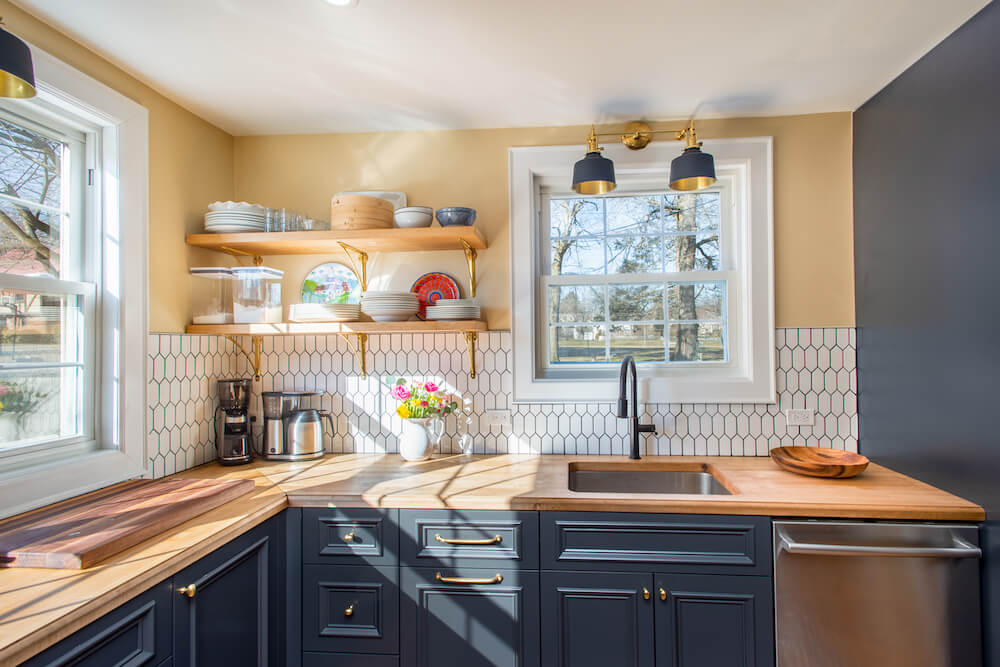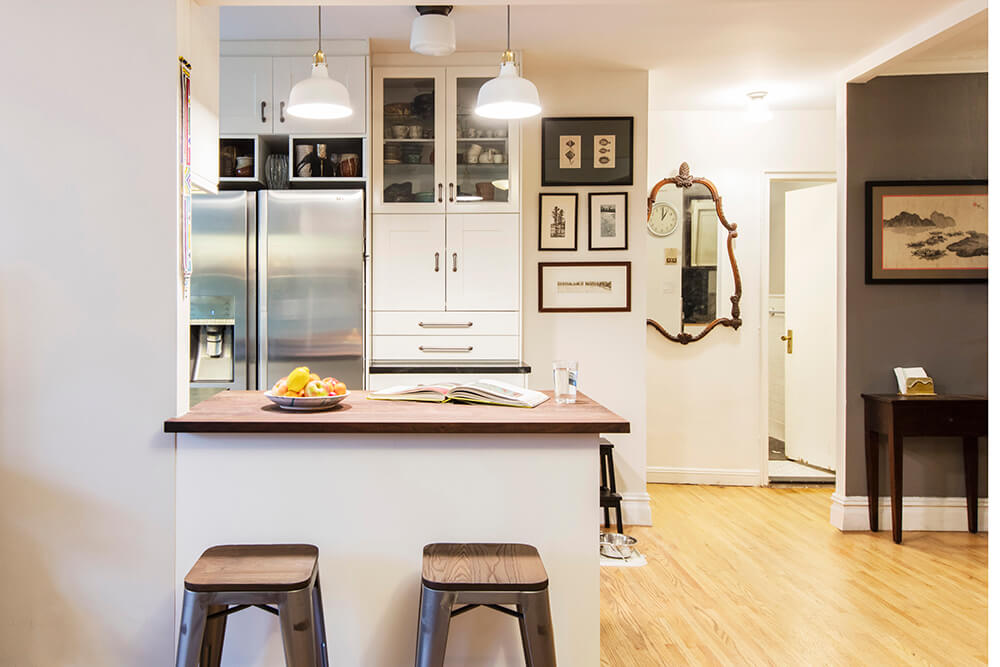A Guide to Popular Types of Kitchen Countertops
Kitchen countertops are one of the highlights of any kitchen, capable of transforming a space with their style and functionality. As homeowners plan a kitchen renovation journey, they encounter a diverse range of materials, including natural stone, engineered quartz, solid surface, and wood. To make an informed decision, it’s essential to explore different countertop options and the factors to consider for any dream kitchen.
Elevate your kitchen with the perfect countertop: Granite, quartz, and more
At Sweeten, we’re experts at all things general contractors. Here’s how Sweeten works: We pre-screen them for our network, carefully select the best ones for your remodeling project, and work closely with hundreds of general contractors every day.
After choosing kitchen cabinet materials, kitchen countertops play a pivotal role in setting the tone and style of your kitchen. With a dizzying array of options—from timeless stone to modern quartz, sleek solid surfacing to warm wood—choosing the perfect countertop can feel overwhelming.
- Where will it go? Will it be attractive if it’s visible from adjoining living areas as well as the cooking space?
- How will you use it and how often? Can it stand up to common spills and daily impact with cooking tools?
- What other features will it connect to? Will it look good and stand up to adjoining elements, like a sink or a stovetop?
- How often do you clean? Besides the after-meal swipe with a sponge, are you up for taking the time for regular maintenance?
Happily, whatever your answers are to the questions above, there is a countertop for you. Today’s eclectic kitchen styles also welcome a mix of materials, so don’t worry about everything matching. You can have one material for the island and another for the countertop, or treat yourself to a small slab of marble for bar space, for instance. For best results, always hire a professional certified to fabricate and install the particular material you choose.
Below are popular kitchen countertops that Sweeten homeowners have installed, along with the pros and cons of each material.
Sweeten matches home renovation projects with vetted general contractors, offering guidance, tools, and support—for free.
Marble kitchen countertops
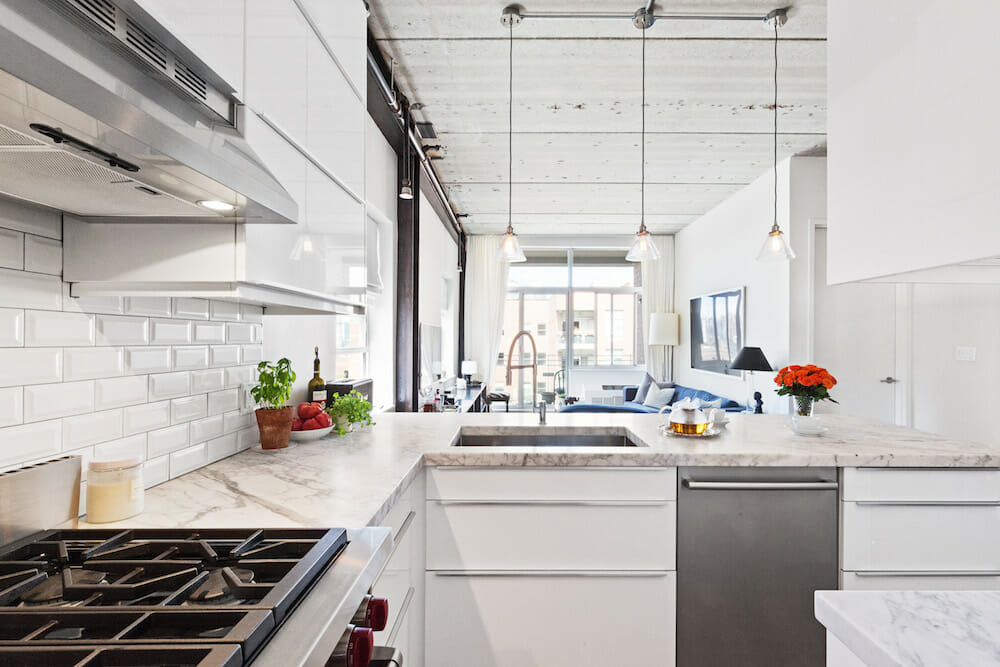
Sought for its classic beauty and variety, marble still draws its fans among homeowners who want to have stone in the kitchen. However, it is more porous than granite, and this factor—combined with a high price tag—limits its application to a few areas of the kitchen, like entertaining or baking areas. Remember that this particular material enjoyed pride-of-place in grand homes in the last two centuries, so if you are up for classic elegance that yields a timeworn patina, this could be the stone for you.
Cost of marble kitchen countertops
- Starts at more than $100 per square foot (which does not include fabrication)
Pros of marble kitchen countertops
- Withstands high heat
- Adds a high-quality, luxury look suitable for traditional or contemporary kitchens
- Stays cool, so good for rolling out dough
- Pairs beautifully with many other surfaces, especially wood and metal
Cons of marble kitchen countertops
- The most expensive of stones
- Limited in color choices—whites, grays, blacks
- Stains, scratches, cracks, and chips more easily than other stones
- Requires monthly sealing and may still discolor
Soapstone countertops
Sweeten brings homeowners an exceptional renovation experience by personally matching trusted general contractors to your project, while offering expert guidance and support—at no cost to you. 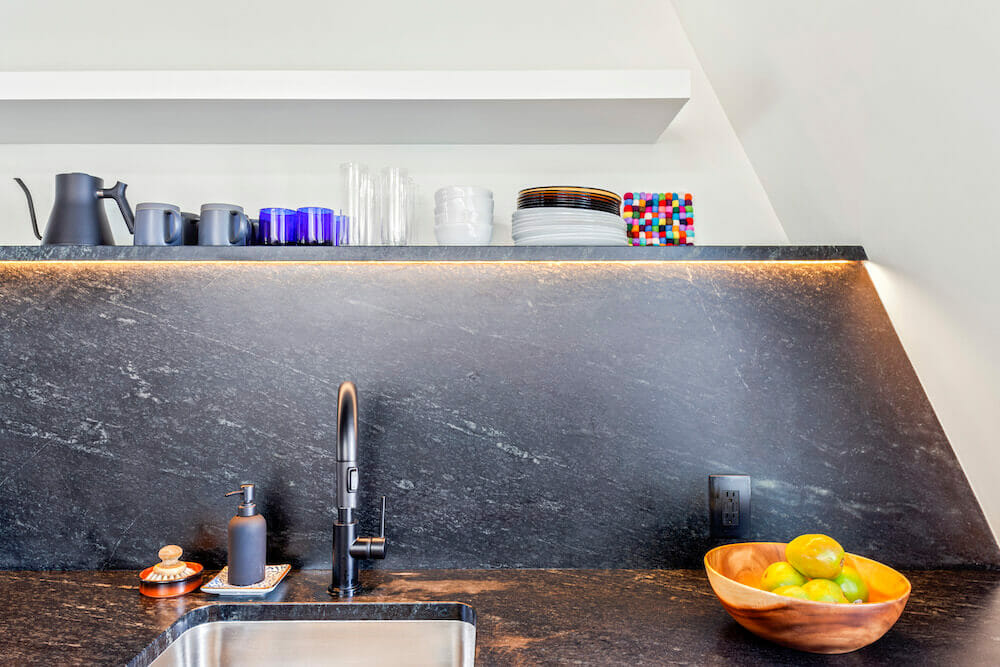
Renovate expertly with Sweeten
Soapstone’s resistance to heat and water, along with a muted color palette marked by subtle veining, makes it an appealing alternative to granite and marble. It also comes with a slightly lower price tag, which is attractive to budget-conscious homeowners. However, soapstone countertops do require care, like all stones.
Cost of soapstone countertops
- Starts at around $70-$100 per square foot
Pros of soapstone countertops
- Resists heat and water
- Color tends to be uniform throughout the slab
- Suitable for sinks, too, if you want a blended look
- Comes in at the lower price spectrum of natural stone
Cons of soapstone countertops
- Scratches easily and will show stains, which can be sanded out
- May crack or chip if you aren’t careful when working on it
- Requires regular sealing and will show stains if not wiped up immediately
- Develops a patina over time, which you may or may not like
Engineered stone countertops
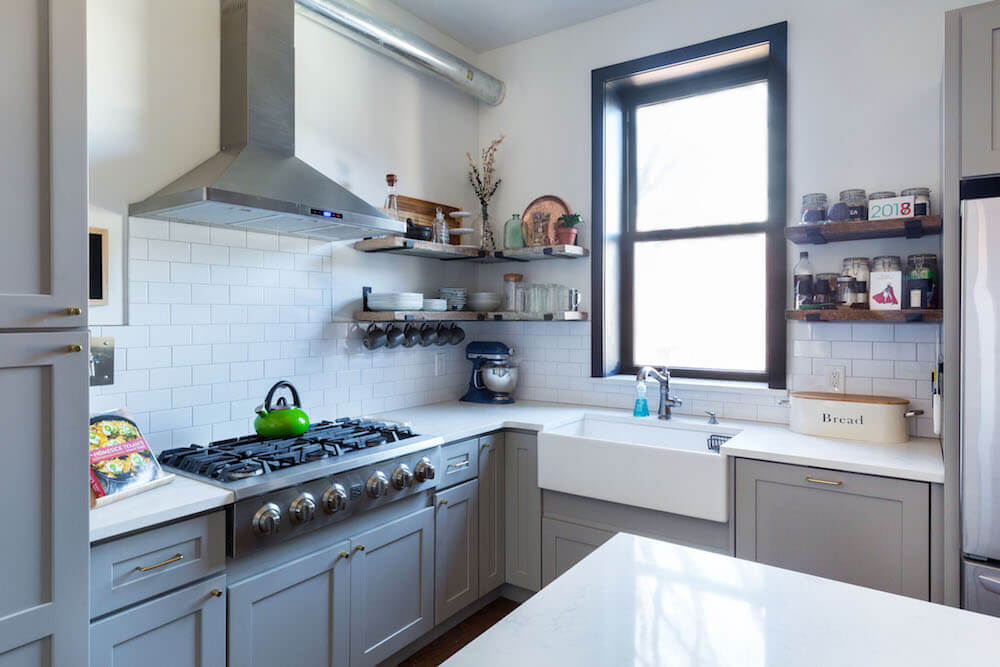
Of all the types of kitchen countertops, engineered stone is probably the toughest surface on the market. This material is typically 90 percent quartz mixed with pigments and polyester resin, then manufactured under pressure into highly dense slabs. Manufacturers such as Caesarstone offer a vast array of looks, including many faux granites as well as the whitest whites, blackest blacks, and some brilliant colors like red and blue. Claims that it won’t stain or fade or succumb to high heat make them popular kitchen countertops, edging out granite, despite the fact that the cost is roughly the same or higher than natural stone.
Cost of engineered stone countertops
- Starts at around $100 per square foot
Pros of engineered stone countertops
- Most impervious of all surfaces; resists heat, stains, scratches, bacteria, fading
- Huge selection of patterns and colors, including faux stones and custom colors
- Can be manufactured into nearly any shape you want
- Requires no sealing or special maintenance
Cons of engineered stone countertops
- Faux stone doesn’t appear to look like real stone
- May crack on sudden impact with a heavy object
- Costs as much as real stone
- Solid-colored slabs will show seams
Granite countertops
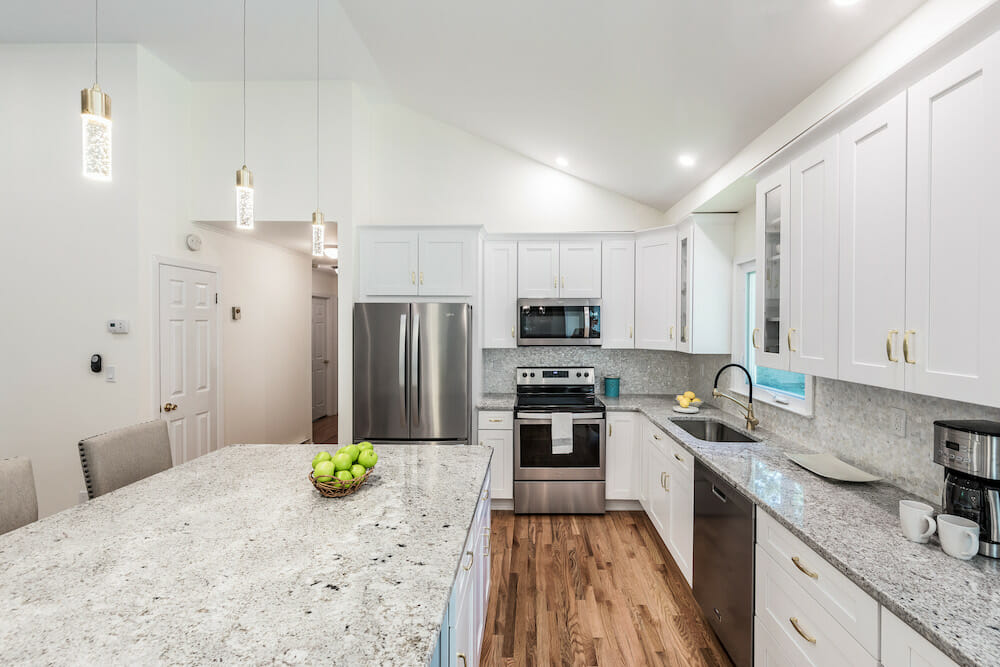
Granite landed on the kitchen scene a little over two decades ago and remains popular. It’s a close second behind the number one choice, engineered stone, according to a survey from the National Kitchen and Bath Association. Why do granite countertops endure? Simply put, they combine unique beauty with durability and low maintenance. The natural grain means no two slabs will be identical. While very hard and impervious to heat, granite is porous, so it needs to be sealed at least annually—easy enough with hand application by sponge.
Cost of granite countertops
- Starts around $60-$100 per foot
Pros of granite countertops
- Resists high heat
- Comes in a range of colors and grains
- Each slab has a unique appearance
- Maintains its value if well cared for, including sealing annually
Cons of granite countertops
- Expensive, but popular colors come in lower prices
- Shows wear from knives and spills like vinegar, citrus juice, and oils, so use a cutting board on top
- Requires regular maintenance, which a DIY project with a sealant and a sponge can accomplish
- Will crack if improperly installed or a heavy object makes an impact
Solid surface countertops
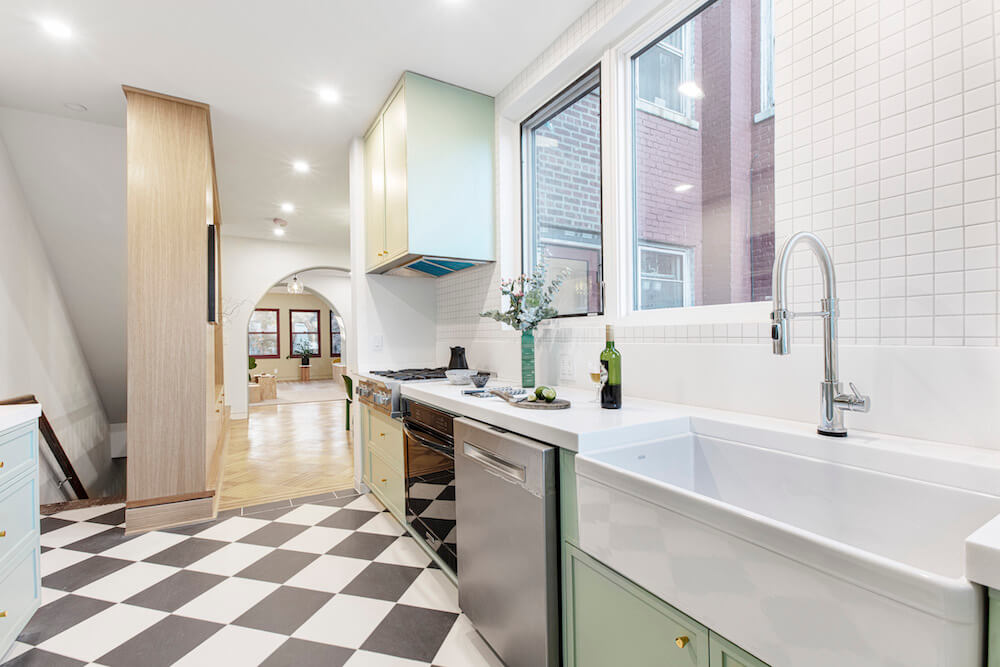
Twenty years ago, solid surfacing was the darling in the world of kitchen countertops. It still deserves consideration, as many qualities have been improved over time by brands like Corian. It is heat- and stain-resistant and comes in a range of looks, including faux stone, and lots of fashion colors. Because it has a little give, due to it being made of acrylic or polyester or a blend of the two, objects dropped on solid surface counters are less likely to break. It also can be molded into many shapes, including intricate inlays, edge and backsplash treatments, as well as furniture.
Cost of solid surface countertops
- $80 to $100 per square foot, depending on the pattern and color
Pros of solid surface countertops
- Heat- moisture-, and fade-resistant
- Enormous choice of colors and patterns, including custom
- Seams fuse together so joints don’t show
- Molds into just about any shape including integrated backsplash or sink
- Does not require sealing; clean with mild detergent
Cons of solid surface countertops
- Can’t take high heat; will lose shape
- Vulnerable to scratches, cuts, and prolonged exposure to stains like wine or catsup; requires a cutting board
- Faux stone looks don’t exactly resemble stone
- Not recyclable
Wood countertops
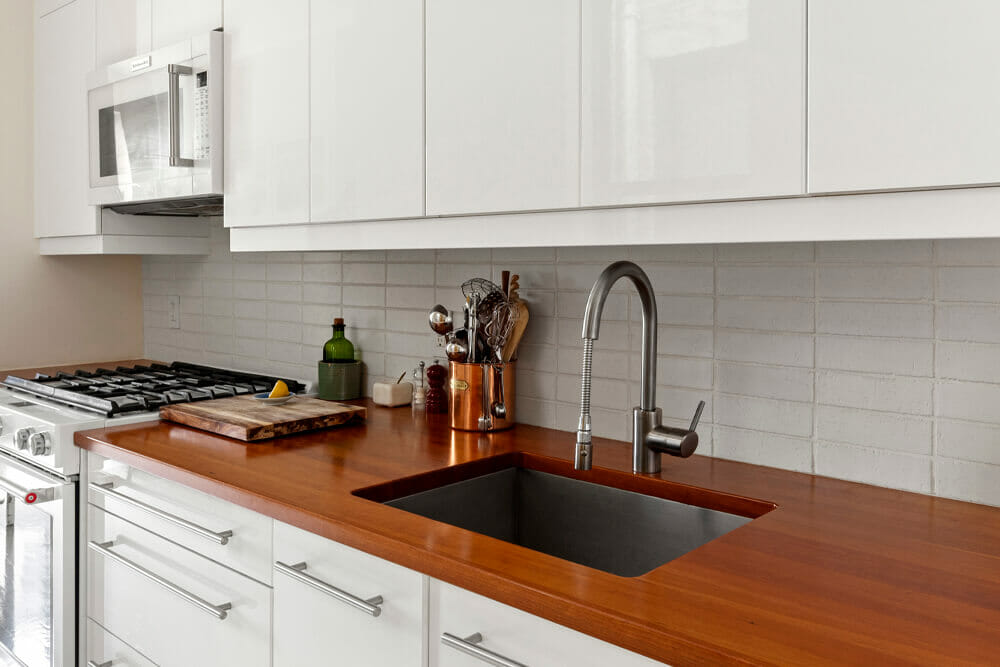
Probably America’s earliest type of kitchen countertop, wood is still desired for its natural beauty and warmth. Wood countertops can take moderate heat, but it will show burns, dings, and knife cuts. Fans consider the patina part of the appeal. Most damage can be sanded out; be sure to reapply food-safe mineral oil after any repair. Avoid installation in areas like the sink with prolonged exposure to moisture, which will cause it to swell. Clean with a damp sponge and a mild detergent. Hardwoods such as maple and oak are most commonly used as kitchen countertops, in a butcher-block pattern, which provides additional strength. Another pro of wood countertops: they’re a thriftier choice than many of the other types of countertops described above.
Cost of wood countertops
- Starts at around $35 per square foot; rarer woods can be more expensive
Pros of wood countertops
- Easy to clean and repair
- Good for cutting and chopping; knives won’t dull with contact
- Won’t chip and objects dropped on it are less likely to break
- Provides a rich look for a price lower than many other kitchen surfaces
Cons of wood countertops
- Vulnerable to moisture, chemicals, and high heat, which cause permanent damage
- Immediately shows signs of use
- Expands or contracts with extreme swings in a moist environment
- Requires food-safe sealant and regular care to preserve the surface
Laminate countertops
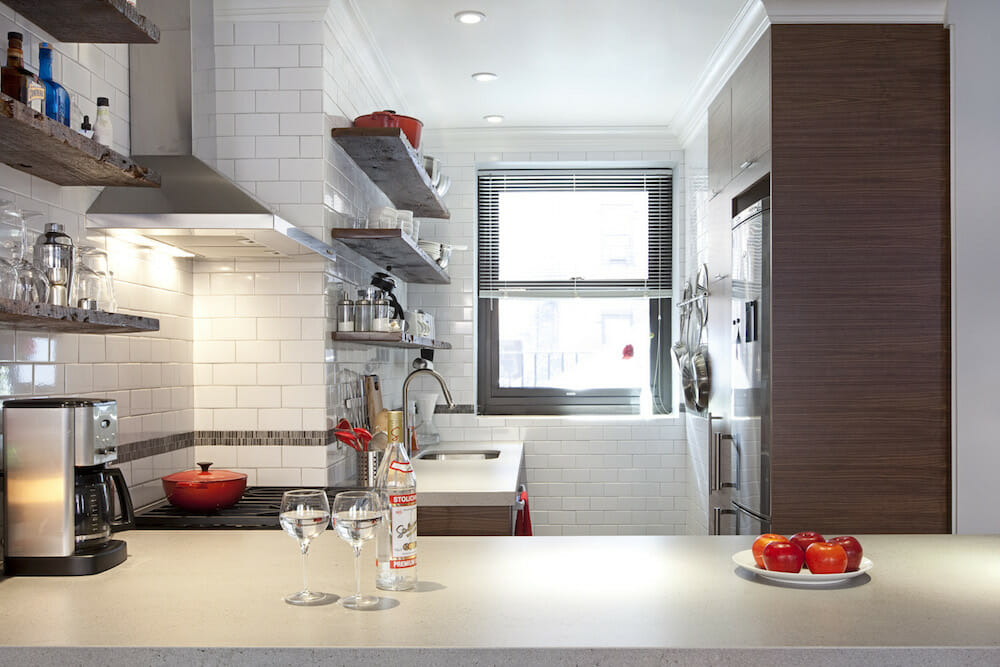
While not so rugged as most types of countertops today, laminate countertops still have plenty of upsides. To start, laminate countertops come in loads of patterns and colors and have a thrifty price tag. Made of resin-covered paper backed by plywood or particleboard, laminate does come with its share of synthetics. To ensure your indoor air quality, look for laminate countertops certified by Greenguard, like Wilsonart. This indicates they are made from low-emitting materials that use formaldehyde-free paper and low- or non-toxic glues. This fashion-friendly surface can mimic the look of stone, wood, or fabric, or any graphic the manufacturer can think of. It will last for a few decades with proper care, which includes no direct cutting on the surface or exposure to acid or chemicals.
Cost of laminate countertops
- Starts at $10 to $20 per square foot
Pros of laminate countertops
- Requires minimal care and no sealing
- Available in a vast selection of patterns and colors
- Easy to cut and install in tight spaces
- Well-priced, particularly for a product with so many style options
Cons of laminate countertops
- Scratches and burns easily; sometimes impossible to repair
- Seams show, particularly on solid colors
- Allows only drop-in sinks, due to their construction
- Anything other than the simplest edge treatment will drive up the price
Stainless steel countertops
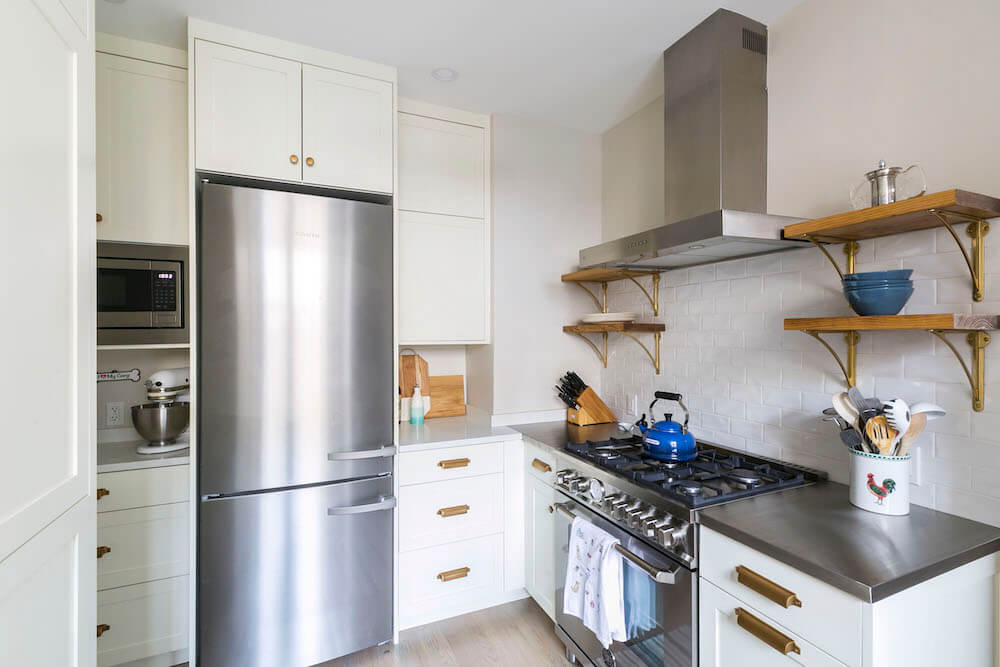
Of all the types of kitchen countertops, stainless steel countertops are commonly used in commercial kitchens. This is because stainless steel can take a beating: from knives, high heat, most spills, and it’s completely anti-bacterial. You must avoid caustic chemicals, but since it’s water- and stain-proof, that’s not an issue unless you use it for something other than food prep. It comes in a number of finishes, including polished and brushed, which help hide scratches. Dings and dents will show up and are impossible to remove without displacing the countertop. But if you want a pro-style countertop, those battle scars can be shown with pride.
Cost of stainless steel countertops
- Starts at around $70 per square foot
Pros of stainless steel countertops
- Super-resilient material is water-, stain-, fade-proof and resists bacteria
- No need for sealing; cleans with simple detergent and water
- Integrates seamlessly with features like drainboards, sinks, and backsplashes
- Manufactured to exact specifications, so potentially seamless
Cons of stainless steel countertops
- Not suitable for cutting; must use a board to protect from knives
- Shows the smallest scratches and dents, which are very hard to remove
- Noisy when kitchen tools come in contact
- Fabrication will drive up the price unless you buy a ready-made sink and drainboard unit
Remodeling kitchen countertops with Sweeten
In 2021, homeowners can have their perfect pick from the many types of countertops available. Need a super-durable kitchen surface? Look at granite countertops. Care more about achieving a luxurious look? Marble is your best bet. Or, if you want to keep it classic (or contemporary,) check out wood or stainless steel countertops. Interested in remodeling your kitchen? Sweeten works with expert general contractors who have experience installing many types of kitchen countertops.
A well-designed kitchen pantry is crucial in keeping your kitchen organized and neat.
Kitchen countertops make up the bulk of your prep space—but it’s not just what’s on top that matters. Explore a variety of islands and peninsulas in Sweeten homes to make the most of your dual workspace and storage.
We can help plan your renovation
Find endless home renovation inspiration, detailed guides, and practical cost breakdowns from our blogs. You can also post your project on Sweeten today and get matched with our vetted general contractors and get estimates for free!
